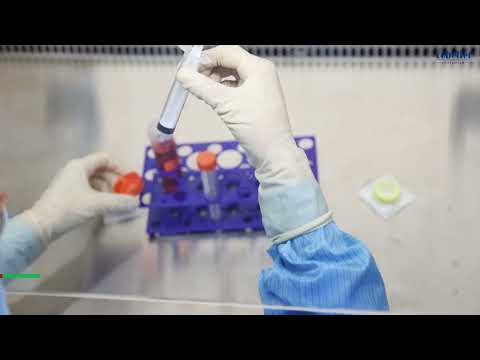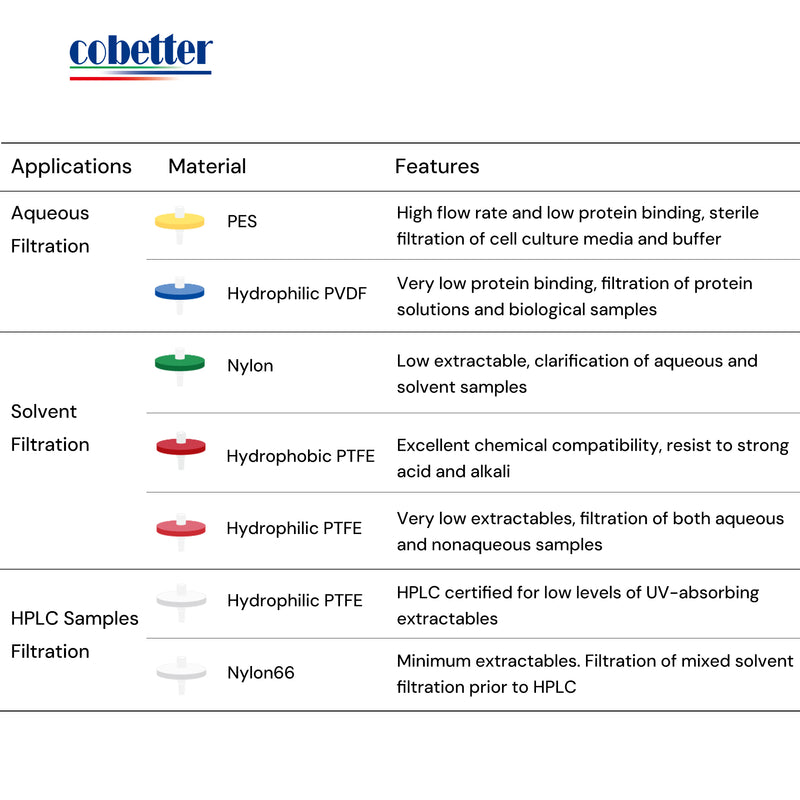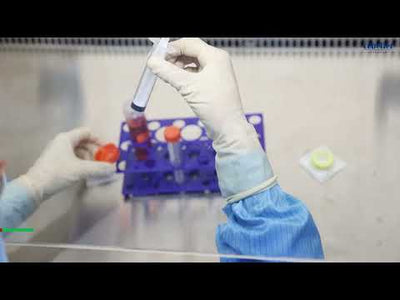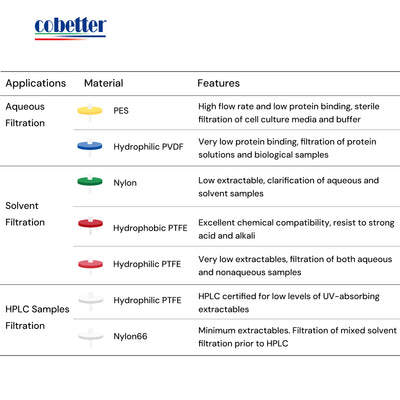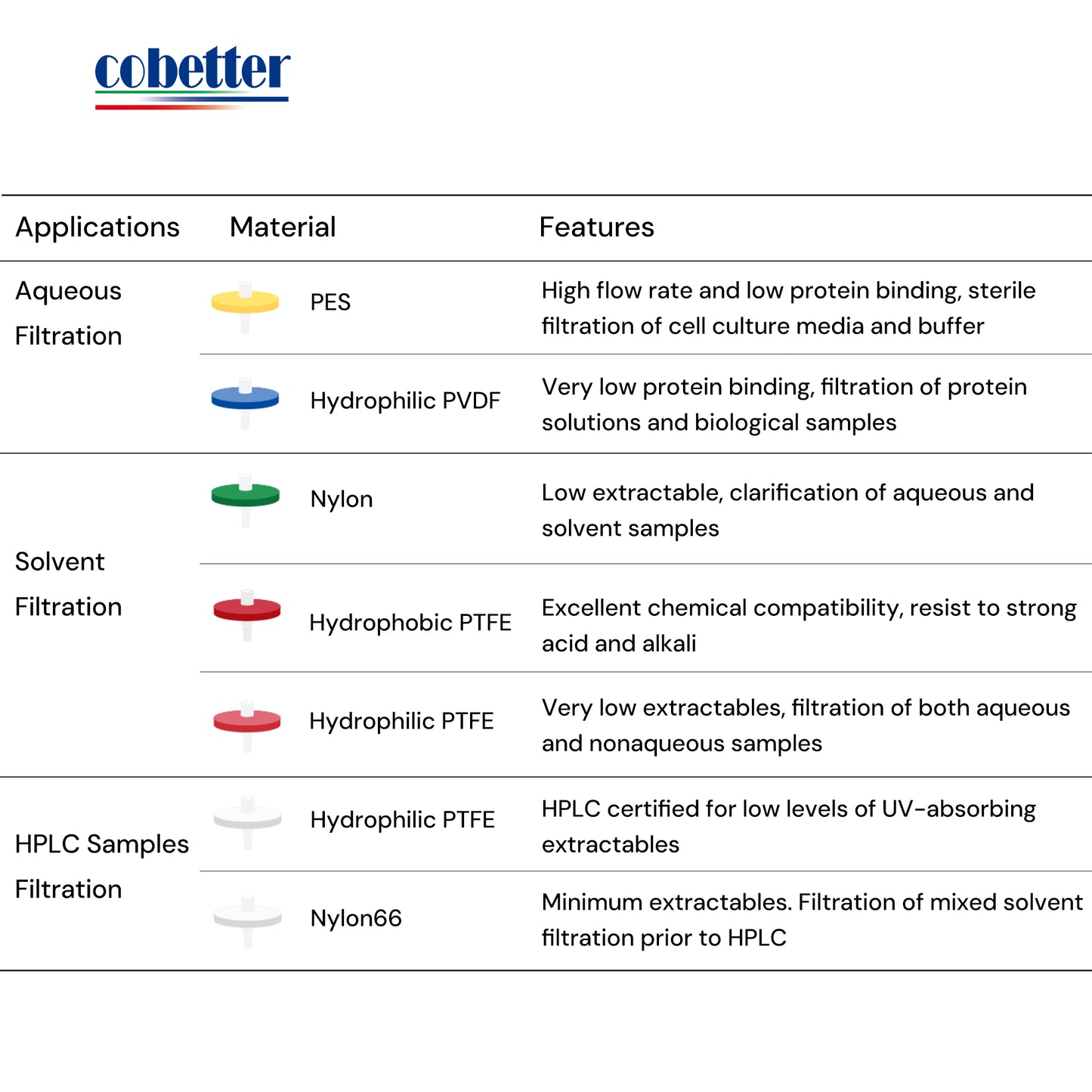Blue Hydrophilic PVDF Syringe Filters Non-sterile 100pcs/pk
Couldn't load pickup availability
Cobetter hydrophilic PVDF syringe filters offer low protein binding and ideal for applications where high protein recovery is desired. They are not recommended for the filtration of acetone, DMF, DMSO, or strong bases. The housing is made of premium polypropylene which has a wide chemical compatibility. The Over molded design ensures higher operating pressures. Luer lock inlet/outlet offers leak-tight syringe connection.
Specifications
| Connections | Inlet | Female Luer Lock | |||
| Outlet | Male Luer Slip | ||||
| Materials | Housing |
PP | |||
| Membrane | PVDF | ||||
| Wettability | Hydrophilic | ||||
| Physical Properties | Pore Size | 0.1 μm, 0.22 μm, 0.45 μm | |||
| Filter Diameter |
|
||||
| Filtration Area |
|
||||
| Maximum Operating Pressure |
|
||||
| pH Range | 1.0 – 8.0 | ||||
| Sterility | Delivery Condition | Nonsterile | |||
| Sterilization Method | Not Recommended | ||||
| Package | Pack Size | 100pcs | |||
| Packaging | Bulk packed |
Performance
| Filter Diameter | Pore Size | Flow Rate (mL/min@0.21Mpa, 20°C, 210kPa, 30psi) |
Bubble Point (MPa, Water) |
| 13mm | 0.1μm | 9 | ≥0.48 |
| 0.22μm | 24 | ≥0.3 | |
| 0.45μm | 103 | ≥0.12 | |
| 25mm | 0.1μm | 58 | ≥0.48 |
| 0.22μm | — | ≥0.3 | |
| 0.45μm | 442 | ≥0.12 | |
| 33mm | 0.1μm | 63 | ≥0.48 |
| 0.22μm | — | ≥0.3 | |
| 0.45μm | 546 | ≥0.12 |
Features
- Available in pore sizes 0.1μm, 0.22μm and 0.45μm
- Hydrophilic PVDF membrane with low protein binding
- Excellent chemical compatibility
Applications
- Aqueous and solvent-based sample filtration
- Sample filtration of biological samples and protein solutions prior to HPLC
Select by Volume
| Sample Volume | Filter Diameter | Filtration Area | Hold-up Volume |
| < 10mL | 13mm | 0.72 cm² | < 25μl |
| 10mL to 100mL | 25mm | 3.4 cm² | < 100μl |
| 100mL to 200mL | 33mm | 4.5 cm² | < 125μl |
How to use a syringe filter?
Choose the right type of membrane material based on the properties of your sample. Be careful of the chemical compatibility to avoid extractables and leachables. Read this article about How to choose a syringe filter.
1. Load the sample into the syringe.
2. Attach the filter to the luer-lock of the syringe with a twisting motion. Make sure it is securely attached.
3. Filter the sample. Hold the syringe and filter vertically, and gently press the plunger to push the sample through the filter. Take care not to apply too much force or you may damage the filter.
4. Discard the used filter and repeat for the next sample.

